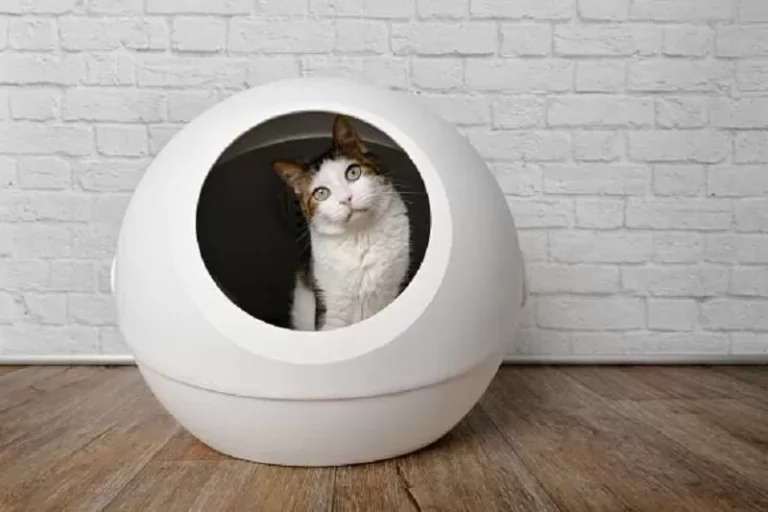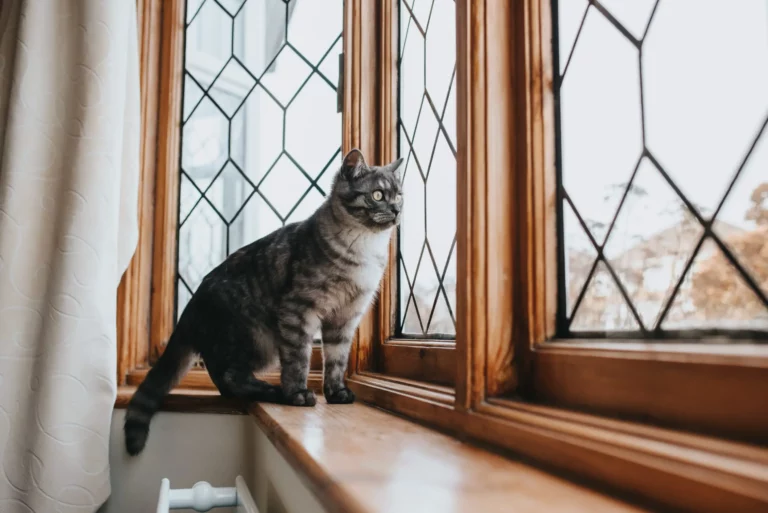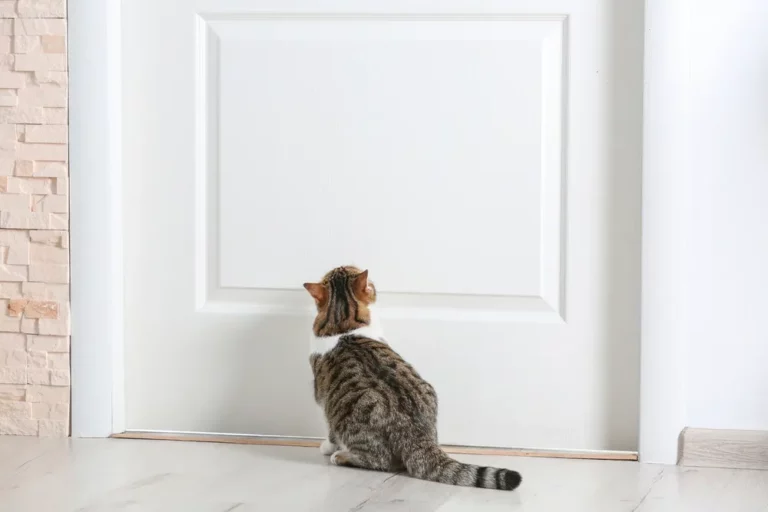How to Keep Fleas Out of the Litter Box? Guide to Flea-Free Litter Boxes!
Every cat owner knows that keeping their feline’s living space clean is crucial for health and happiness. But what if you discover an unexpected, tiny, and unwelcome guest in your cat’s litter box?
Yes, we’re talking about fleas. How to keep fleas out of the litter box is a question many pet parents find themselves asking, especially during the warmer months when fleas become more active.
In this guide, we’ll unravel the steps to ensure a flea-free zone for your kitty’s personal space, ensuring peace of mind for both you and your feline friend.
Key Takeaways
- Fleas can live in a cat’s environment, including their litter box.
- Regular cleaning and maintenance are critical.
- Flea prevention in cats is the first line of defense.
Short Answer: To keep fleas out of the litter box, ensure your cat is treated with a reliable flea preventive, clean the litter box frequently, and maintain a flea-free home environment.
Understanding the Flea Life Cycle
To combat any adversary, understanding them is half the battle. Fleas are no different. These tiny pests have a life cycle that, if understood, can be disrupted, making our prevention strategies more effective.
Fleas go through four primary stages in their life:
- Eggs: The beginning of the flea’s life starts with the female laying eggs. These eggs are often not sticky, which means they can fall off the host animal (like your cat) and end up anywhere in your home – including the litter box.
- Larvae: After a few days, these eggs hatch into larvae. They’re tiny, worm-like creatures that avoid light and burrow into carpets, crevices, and, yes, litter. Larvae feed on organic debris, but primarily on the feces of adult fleas, which contain undigested blood.
- Pupae: The next phase sees these larvae cocoon themselves, entering the pupa stage. This stage is particularly resilient. Inside their protective casing, the developing fleas wait for the right time to emerge. This can sometimes be a week, but in adverse conditions, it might extend to months.
- Adult: Once conditions are favorable (this could be the right temperature, vibrations indicating a host is nearby, or an increase in carbon dioxide indicating a potential meal), the adult flea emerges. Hungry and ready to feed, they’ll hop onto a host at the first opportunity.
Knowing this life cycle can aid in targeting and breaking the cycle at multiple points, ensuring a more comprehensive approach to keeping these pests out of your cat’s litter box and living quarters.
Why the Litter Box?
A common question that baffles many cat owners is, “Why would fleas be attracted to a cat’s litter box?” To understand this, we need to delve into the unique environment that a litter box provides and the nature of fleas.
Ideal Environment
A litter box, especially if it’s not cleaned regularly, presents an ideal environment for fleas, particularly during their larval stage. The moisture, warmth, and presence of organic material (like feces) make it a perfect breeding ground. The tiny, worm-like larvae thrive in such conditions, feeding on organic debris.
Proximity to the Host
Another reason is the obvious proximity to their primary host: your cat. While adult fleas will primarily be on your cat, the eggs they lay can easily fall off. Since your feline friend frequents the litter box multiple times a day, it’s a convenient place for those eggs to end up and subsequently hatch.
Safety from Predators
The litter box is somewhat of a safe haven for fleas. Many common predators of fleas, like some types of ants, avoid areas like litter boxes. This unintentionally creates a protected area for fleas to thrive.
In understanding why fleas are attracted to litter boxes, we’re better equipped to prevent and treat infestations, ensuring our pets and homes remain flea-free.
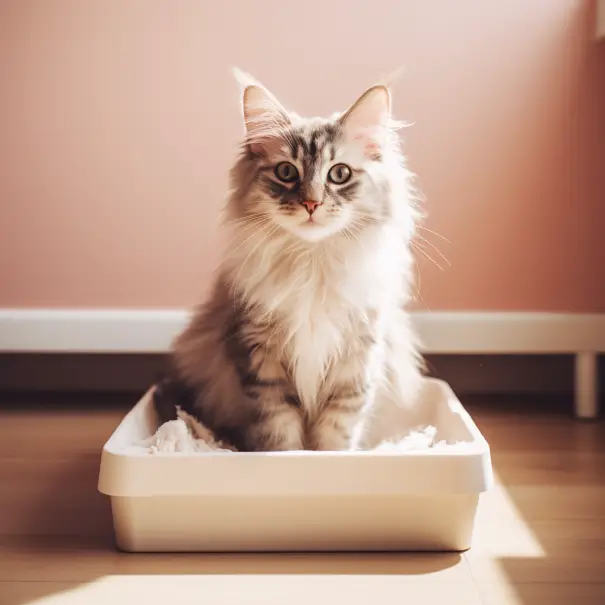
Preventive Steps: Your Cat
The first line of defense against fleas in the litter box begins with the cat itself. By ensuring our feline friends are protected against these pests, we can significantly reduce the risk of an infestation.
No products found.
Choosing the Right Flea Treatment
Fleas are not just a nuisance; they can pose health risks to your cat, from skin infections to the transmission of other parasites. Therefore, choosing the right flea treatment is paramount.
Flea Collars: These are a popular choice for many pet owners due to their convenience. They release insecticides that either repel or kill fleas. However, their efficacy can vary, and some cats might find them uncomfortable or show allergic reactions.
Topical Treatments: These are liquid treatments applied directly to the cat’s skin, typically at the back of the neck. They work by killing fleas on contact or when they bite. Many topical treatments also offer protection against ticks and other pests.
Oral Preventives: These are pills or chewable tablets given to the cat. They work by disrupting the flea life cycle, ensuring that any flea that bites the cat doesn’t live long enough to reproduce.
Regardless of the method chosen, it’s crucial to consult with a veterinarian. They can advise on the best treatment suited for your cat, considering its age, weight, health, and lifestyle.
Regular Check-ups
It’s not enough just to treat your cat against fleas; regular check-ups are essential. Even with preventive measures in place, there’s always a slight chance of a breakout. Routine visits to the vet can ensure early detection and treatment of flea infestations.
During these visits, the vet will conduct a thorough examination, looking for signs of fleas or related complications. Regular vet check-ups not only safeguard against fleas but also ensure your cat’s overall health and well-being.
Preventive Steps: The Litter Box
While treating your cat is essential, ensuring a clean, flea-free environment is just as crucial. The litter box, being a prime hotspot for fleas, demands special attention. Here are steps to ensure it stays flea-free.
Regular Cleaning
A clean litter box is not just pleasant for your feline friend, but it’s also less attractive to pests like fleas.
Daily Scooping: Fleas thrive in waste. By scooping the litter box daily, you remove the environment they love, making it less inviting for them. Plus, it ensures your cat has a clean place to do their business.
Deep Cleaning and Litter Replacement: Over time, residues can build up at the bottom of the box. It’s recommended to perform a deep cleaning at least once a month. This involves emptying the box entirely, washing it with soap and hot water, drying it thoroughly, and refilling it with fresh litter.
Litter Choices
The type of litter you use can also play a role in flea prevention.
Types of Litters: While there’s no specific litter guaranteed to repel fleas, some litters can make the environment less hospitable. For example, litters that clump and dry out quickly can help reduce the moisture that fleas love.
Natural Repellent Additives: Consider adding natural flea repellents, like diatomaceous earth or eucalyptus leaves, to your cat’s litter. These can deter fleas from taking up residence. However, always ensure they are safe for your cat before use.
Box Location
The location of your litter box can influence its attractiveness to fleas.
Dry and Less Humid Location: Fleas thrive in humidity. By placing the litter box in a dry, well-ventilated area, you make the environment less appealing to them. Avoid basements or bathrooms if they tend to be damp.
Seal and Protect
Further measures can be taken to ensure the litter box area is fortified against fleas.
Using Litter Box Liners: These liners can act as a barrier, preventing fleas from setting up shop at the base of the box.
Natural Repellents around the Box Area: Sprinkling natural repellents, like cedarwood chips or lemon peels, around the litter box area can deter fleas. Again, always ensure that any repellent used is cat-friendly.
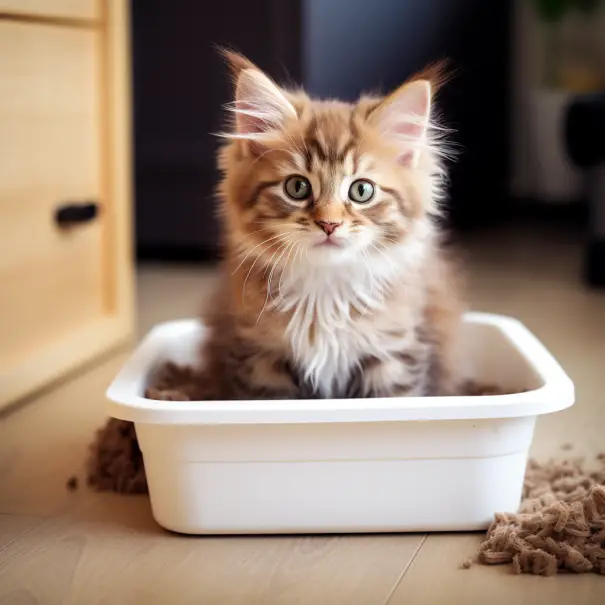
Preventive Steps: Home Environment
A comprehensive approach to flea prevention goes beyond the cat and its litter box. Your entire home environment plays a critical role in ensuring fleas don’t find a comfortable dwelling. Here’s a guide to ensuring your home doesn’t become a flea haven.
Regular Vacuuming
Your vacuum cleaner can be one of the most effective tools against fleas. Fleas, their eggs, and larvae often lurk within the fibers of carpets, rugs, and even your couch’s upholstery.
Importance of Vacuuming: Regular vacuuming removes adult fleas, their eggs, and larvae. It’s recommended to vacuum every other day during peak flea seasons. Make sure to empty the vacuum canister or change the bag immediately after, sealing the contents in a bag before disposal to ensure fleas don’t crawl back out.
Wash Bedding and Cat Toys
Fleas don’t just reside on your cat; they can be found in places your cat frequents, like their bedding or favorite play toys.
Hot Water Washing: Wash your cat’s bedding, soft toys, and even your own bed linens in hot water at least once a week. This not only cleans away any fleas but also kills them effectively. Remember to dry on the highest heat setting as the combination of hot water and high heat drying is lethal to fleas at all stages of their life cycle.
Natural Repellents
Nature provides a plethora of options that can act as natural flea repellents, ensuring a safer environment for both pets and their owners.
Safe Plants and Essential Oils: Plants like lavender, pennyroyal, and chrysanthemums are known to deter fleas. Similarly, essential oils such as cedarwood, lemongrass, and peppermint can act as repellents. However, always ensure that any essential oil used is safe for cats, as some can be toxic to them.
Chemical Treatments
Sometimes, despite our best natural efforts, chemical treatments may become necessary to control a heavy infestation.
Using Flea Sprays or Powders Safely: If you opt for chemical treatments, always follow the label’s instructions. Keep the treated areas ventilated and ensure your cat (or any other pet) doesn’t have access to the area until it’s safe. As always, if you’re unsure, consult with a professional exterminator or your veterinarian.
Signs Your Cat Has Fleas
Detecting a flea infestation early can make a world of difference in managing and eradicating these pesky parasites. Often, cats will show signs of discomfort that can clue you into a potential flea problem. Here’s what you should be on the lookout for:
Excessive Scratching, Licking, or Biting
One of the most evident signs of fleas is when your cat starts scratching more than usual. Fleas typically target areas like the head, neck, tail, groin, or under the legs. If you notice your cat persistently scratching, licking, or biting these areas, it’s a strong indicator of fleas.
Flea Dirt
Flea dirt, or flea excrement, resembles tiny black or dark brown specks. It’s often confused with regular dirt, but there’s a straightforward test to distinguish between them. Place the specks on a wet white paper towel; if they turn a reddish-brown color, it’s flea dirt, which essentially is digested blood.
Red Patches or Bumps on Skin
Flea bites can cause irritation, leading to red patches, bumps, or inflamed skin. In some cases, cats might develop an allergic reaction to flea bites, known as flea allergy dermatitis, which can cause even more intense itching and skin inflammation.
Hair Loss
Constant scratching or biting at flea-infested areas can lead to noticeable hair loss. If your cat has patchy fur or bald spots, especially around the base of the tail or belly, it’s a sign that fleas might be the culprits.
Visible Fleas
While this might seem obvious, many people don’t actually check their cats for fleas. Adult fleas are small but visible to the naked eye. Part the fur and look closely, especially in the areas where your cat has been scratching. You’re likely to spot these tiny, fast-moving brown insects.
Behavioral Changes
Your cat might become restless, exhibit anxiety, or show signs of discomfort like twitching its tail or being more aggressive. These behavioral changes can stem from the annoyance and irritation of flea bites.
Remember, even indoor cats can get fleas. If you spot any of these signs, it’s essential to act quickly. Consult with a veterinarian, and start the necessary treatments to ensure your cat’s comfort and health.
Frequently Asked Questions
Will baking soda kill fleas in a litter box?
Baking soda isn’t toxic to fleas, so it won’t kill them directly. However, when combined with salt, it can act as a desiccant, potentially drying out flea eggs and larvae. For best results, you would sprinkle a mixture of equal parts baking soda and salt over your carpet or furniture, let it sit, then vacuum thoroughly.
For the litter box, it’s more effective to focus on regular cleaning and using proven flea control products.
Can flea eggs live in a litter box?
Yes, flea eggs can drop off your cat and land in various places, including the litter box. Once there, they can develop into larvae and eventually into adult fleas if the conditions are right. It’s essential to keep the litter box clean and your cat treated to break the flea life cycle.
How do I keep bugs out of my litter box?
To keep bugs out of your litter box:
- Regular Cleaning: Scoop daily and change the litter regularly.
- Choose the Right Litter: Some litters can help deter bugs due to their scent or composition.
- Location: Keep the litter box in a dry area. Bugs, including fleas, are attracted to moisture.
- Seal and Protect: Consider a litter box with a lid or use natural repellents around the box area.
How long do fleas live in a litter box?
The lifespan of a flea in a litter box varies. While adult fleas live on their host (your cat), their eggs, larvae, and pupae can be found off the host in various environments, including the litter box. Flea eggs can hatch into larvae within 2-14 days.
The larvae then develop into pupae, and this stage can last for several days to weeks. The entire life cycle can be as short as two weeks or as long as several months, depending on conditions. Regularly cleaning the litter box and treating your cat can help break this cycle.
Are there specific litters that repel fleas?
While no cat litter is designed specifically to repel fleas, some types may be less attractive to these pests. For instance, litters infused with certain natural scents or essential oils (like eucalyptus or cedar) might deter fleas.
However, it’s crucial to ensure any added ingredients are safe for cats. It’s also worth noting that no litter will be a complete solution to a flea problem. Regular flea treatments and preventive measures are necessary.
Conclusion
Keeping fleas out of your cat’s litter box is more than just a cleanliness concern—it’s an integral part of ensuring your feline friend’s overall health and comfort.
By understanding the life cycle of fleas, recognizing the attraction they have to litter boxes, and implementing thorough preventive measures for your cat, litter box, and home environment, you can significantly reduce the chances of an infestation.
Remember, the key lies in consistency and vigilance. With regular checks, cleanings, and the right preventive steps, you can offer your cat a flea-free environment to thrive in. Don’t wait for the first sign of a flea; start your preventive measures today.

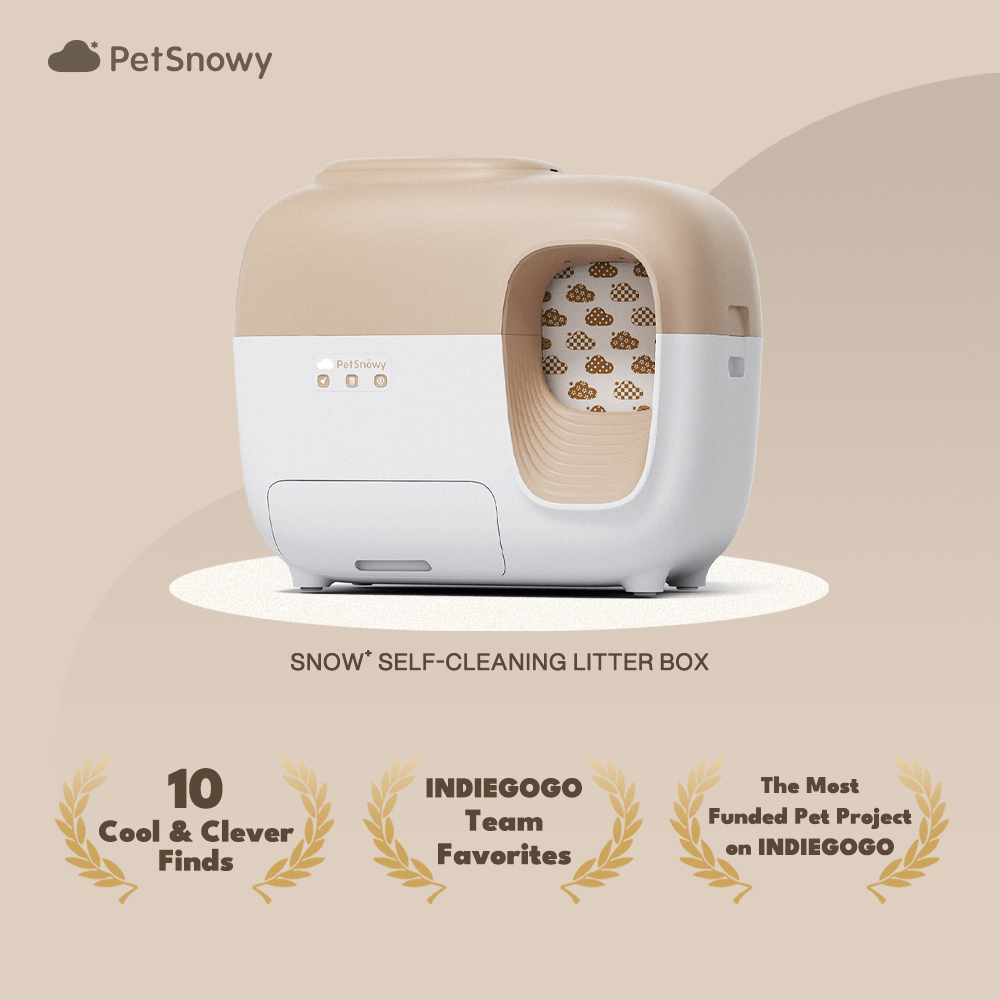

![Why Do Cats Paw Around Their Food Bowls? [7 Reasons]](https://www.warmlypet.com/wp-content/uploads/2023/01/Cat-paws-in-a-bowl-768x513.webp)
